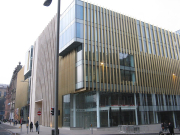
Scotland's Remaining 470 Red Phone Boxes Communities throughout Scotland are receiving a call to safeguard a piece of history by adopting and repurposing traditional red
phone boxes.
A novel program offers the opportunity to take on one of the 162 iconic red boxes for just £1 each.
These historic kiosks account for 470 out of the 2,200 pay phones still standing in Scotland.
In recent years, obsolete phone boxes have been embraced and transformed into diverse facilities, from defibrillator units to libraries and museums.
Rescuing Thousands of Phone Boxes from Closure Saving At Least 1,400 Rural Phone Boxes from Shutdown Hundreds of Scottish Phone Boxes Avoiding the Axe This latest initiative aims to commemorate the upcoming 100th anniversary of these red boxes.
The design, created in 1924 by architect Sir Giles Gilbert Scott, known for iconic works like Battersea Power Station and St Columba's Cathedral in Oban, remains an enduring symbol.
His design was chosen in a nationwide competition organized by the General Post Office (GPO), which operated the UK's telecommunications network.
Architect Sir Giles Gilbert Scott conceptualized the iconic red phone box Across the UK, approximately 20,000 operational payphones remain, a notable drop from their peak of over 100,000 in the 1990s.
BT, previously known as British Telecom, introduced the "Adopt a Kiosk" initiative in 2008. Since then, communities across Scotland have adopted about 550 phone boxes for £1 each.
Nationwide, more than 7,200 have been adopted so far. These kiosks can be taken over by registered charities, community councils, and local authorities.
A recent illustration is the 201 Telephone Box Gallery near St Andrews, reimagined by Fife-based artist Lada Wilson.
This former phone box, standing in Strathkinness village near St Andrews, has hosted over 25 exhibitions since its opening in 2018. It serves as a miniature art space showcasing contemporary works by local, national, and international artists.
An Artful Transformation of a Red Phone Box near St Andrews Lada Wilson expressed pride in the role the gallery played in bringing art to the village. She noted that the gallery's success had inspired similar kiosk galleries across the UK.
"I've been really pleased with the level of support it gets and I've had people coming to me from across the country asking how I did it," she said.
Many of the disused phone boxes are located in rural areas. The Scottish Borders holds the most with 32, and 31 are available in the Highlands.
Ofcom, the communications regulator, determines which phone boxes can be removed based on factors such as mobile coverage, call frequency over the past year, and whether a phone is essential for emergency use at a specific site.
BT's Michael Smy noted that extensive mobile coverage improvements have led to fewer calls from payphones. He emphasized ongoing efforts to evaluate the payphone estate and prioritize the removal of underused units as per Ofcom's guidance.
"As the iconic red kiosk approaches its 100th year, it's a wonderful opportunity to remind communities that are keen on retaining their local kiosk to adopt it for just £1 through our Adopt a Kiosk initiative. We've already witnessed fantastic kiosk conversions across the UK that have become valuable community assets." Photo by dconvertini, Wikimedia commons.








































